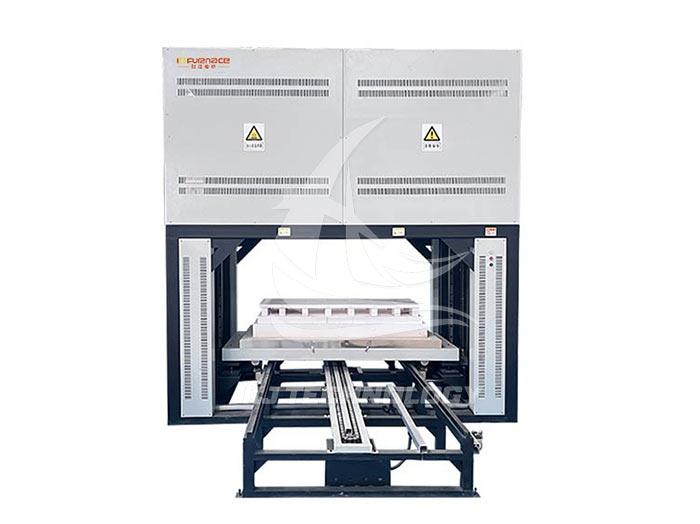Can an electric heating vacuum annealing furnace anneal stainless steel?
 11-12-2025 Author: KJ technology
11-12-2025 Author: KJ technology
Electric heating vacuum annealing furnace can be fully used for annealing treatment of stainless steel, and has significant advantages in improving the performance and surface quality of stainless steel. The following is a specific analysis:
1. Feasibility of using electric heating vacuum annealing furnace to treat stainless steel
Process compatibility
The core purpose of stainless steel annealing is to eliminate processing stress, improve grain structure, enhance toughness and corrosion resistance. The electric heating vacuum annealing furnace can effectively avoid the reaction of stainless steel with oxygen, nitrogen, etc. at high temperatures by precise temperature control (temperature uniformity can reach ± 3 ℃) and vacuum environment (vacuum degree is usually ≤ 1 × 10 ⁻ ² Pa), prevent surface oxidation, decarburization or carbonization, and maintain material purity.
Advantages of temperature control
The annealing temperature range of stainless steel is relatively wide (such as 850-950 ℃ for austenitic stainless steel and 750-800 ℃ for martensitic stainless steel). The electric heating vacuum annealing furnace can quickly raise the temperature to the target temperature and achieve different stage process requirements (such as insulation and slow cooling) through segmented temperature control, ensuring uniform grain refinement.
2. Core advantages of processing stainless steel
Surface quality improvement
Anti oxidation and decarbonization: The vacuum environment isolates oxygen to prevent the formation of oxide scale or decarburization layer on the surface of stainless steel, reducing subsequent pickling and polishing processes and minimizing material loss.
Smooth finish retention: After annealing, the stainless steel surface maintains its original smooth finish, suitable for fields with high surface requirements (such as food equipment and medical devices).
performance optimization
Stress relief: Annealing can eliminate the internal stress generated by cold processing (such as rolling and stamping), preventing material cracking or deformation.
Improving toughness: By refining grain size, the low-temperature toughness and fatigue resistance of stainless steel are enhanced.
Enhanced corrosion resistance: Vacuum annealing reduces surface defects, lowers the risk of corrosive medium penetration, and extends service life.
Process flexibility
Supports multiple types of stainless steel: suitable for different types of stainless steel such as austenitic (304, 316L), martensitic (420, 440C), ferritic (430), etc.
Other processes can be combined, such as vacuum brazing or bright quenching directly after annealing, to achieve integrated production.
3. Typical application scenarios
Precision parts manufacturing
Medical devices (such as surgical knives, implants): Vacuum annealing avoids surface contamination and meets biocompatibility requirements.
Food equipment (such as stainless steel pipes and containers): After annealing, there is no oxide layer on the surface, which meets hygiene standards.
High demand industrial components
Aerospace components: Annealing eliminates stress and improves material reliability in extreme environments.
Chemical equipment: Improve corrosion resistance and adapt to strong acid and alkali environments.
Decorative stainless steel products
Building decoration materials (such as stainless steel curtain walls, elevator panels): After annealing, the surface is as smooth as new and does not require additional polishing.
4. Equipment selection and process parameter recommendations
Key points for equipment selection
Vacuum degree: Depending on the type of stainless steel, it is generally required to be ≤ 1 × 10 ⁻ ² Pa, and for high-end applications, it is required to be ≤ 1 × 10 ⁻ ³ Pa.
Temperature range: Covering the annealing temperature of stainless steel (usually 300-1200 ℃), it is recommended to choose equipment with a wide temperature range.
Heating rate: Rapid heating (such as ≥ 50 ℃/min) can shorten the process cycle and improve efficiency.
Cooling method: Supports air cooling or water cooling, depending on material thickness and performance requirements.
Example of Typical Process Parameters
Austenitic stainless steel (304):
Annealing temperature: 850-900 ℃
Insulation time: 30-60 minutes (adjusted according to thickness)
Cooling method: air-cooled or slowly cooled to below 600 ℃ before being removed from the furnace
Martensitic stainless steel (420):
Annealing temperature: 760-780 ℃
Insulation time: 15-30 minutes
Cooling method: Slowly cool to below 500 ℃ and remove from the furnace








